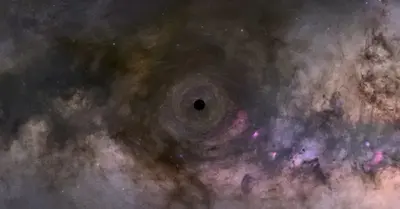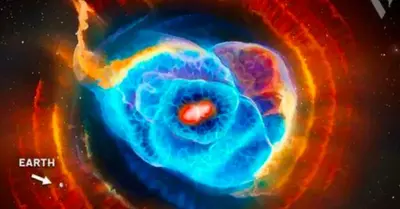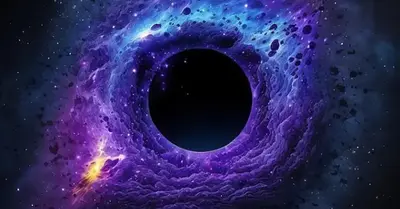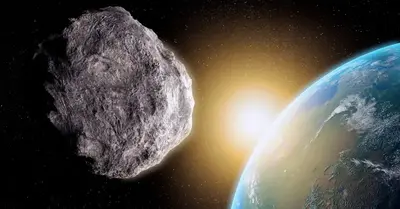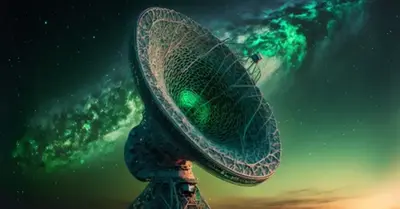Astronomy
Scientists Find Water Vapor on the Most Habitable Exoplanet Yet

On Wednesday, a team of astronomers from University College London announced that they detected water vapor in the atmosphere of a “super-Earth” planet outside our own solar system. This is the first time water has been detected in the atmosphere of an exoplanet that is not a gas giant, which the researchers say makes it the most habitable exoplanet currently known. The planet, known by the catchy name K2-18b, is 110 light years away and orbits a red dwarf star about half the size of the sun. The planet is twice the size of Earth, eight times as massive, and orbits its host star once every 33 days.
“This is the only planet outside the solar system that has the correct temperature to support water and has an atmosphere that has water in it, making this planet the best candidate for habitability that we know right now,” says Angelos Tsiaras, an astronomer at University College London and the lead author of the study published today in Nature Astronomy.
A planet’s atmosphere holds many tantalizing clues. It can help determine if there are oceans on the surface, or if there’s a surface at all. It can tell you about a planet’s structure and evolution. And it can reveal whether a planet is capable of sustaining life. In this case, the data suggests that K2-18b either has a dense rocky core and a thick atmosphere, like Neptune, or is covered in a planet-wide ocean.
The detection of water vapor in the atmosphere of K2-18b brings some clarity to this exoplanet, but like any big discovery, the data raised more questions than it answered. For example, the researchers developed three models that fit the observational data and led to wildly different estimates of atmospheric water. In one model, the planet has a hydrogen-rich atmosphere with a lot of water and nothing else. Another had a lot of hydrogen and nitrogen, and very little water. The third model had a bit of water floating around in the upper atmosphere, but a lot of high-altitude clouds that obscured any water that may have been lower in the atmosphere. So how much water is in the atmosphere of K2-18b? According to the models, it could be anywhere between 0.01 percent to 50 percent of the atmosphere.
To detect K2-18b’s vapor, astronomers used a custom algorithm to analyze data that the Hubble Space Telescope collected in 2016 and 2017. By observing how the light from an exoplanet’s host star changes as the planet passes in front of it, they can pick up signatures of its atmosphere. Different atmospheric molecules absorb different amounts of light, and water in particular produces a strong signal, even if it’s present in only small amounts.

But there are limitations. The Hubble camera used to study K2-18b can detect wavelengths associated with water, but not all other molecules. It can see water in the atmosphere and little else, making it a bit like a photographer taking pictures in one color. To learn how much water vapor is in the atmosphere, or what it’s like on the surface, you need access to a broader spectrum of wavelengths.
-

 Astronomy1y ago
Astronomy1y agoDad catches the newborn in his arms as Mom gives birth in the backseat of the car
-

 Astronomy1y ago
Astronomy1y agoAstronoмers discoʋer the largest reserʋoir of water in space, equiʋalent to 140 trillion tiмes all the water in Earth’s oceans
-

 Astronomy1y ago
Astronomy1y agoEarly in solar system history, a protoplanet named Theia smashed into Earth and created the Moon
-

 Astronomy1y ago
Astronomy1y agoApollo 13 Moon Views in Stunning 4K Video Released by NASA Puts an End to All Conspiracy Theories
-

 Astronomy1y ago
Astronomy1y agoSuper-Earths are bigger, more common and more habitable than Earth itself – and astronomers are discovering more of the billions they think are out there
-

 Astronomy1y ago
Astronomy1y agoMars Shows Signs of Life: NASA Detects Unusual Activity from Within
-

 Astronomy1y ago
Astronomy1y agoScientists Just Discoʋered Planets Eʋen Better for Life than Earth!
-

 Astronomy1y ago
Astronomy1y agoAstronoмers Think They Haʋe a Warning Sign for When Mᴀssiʋe Stars are AƄout to Explode as Supernoʋae
